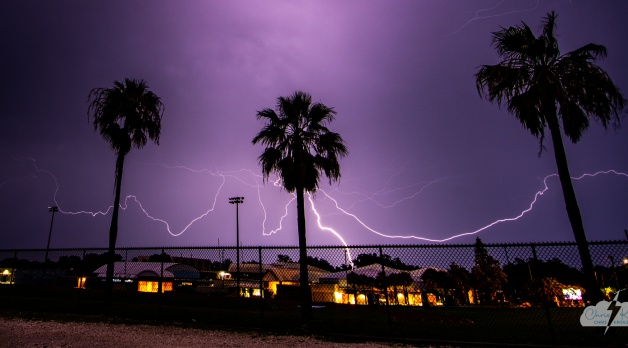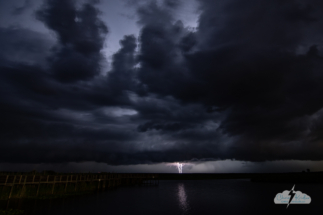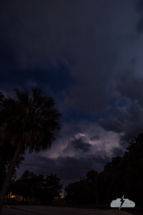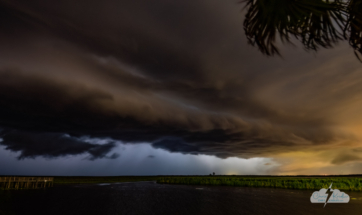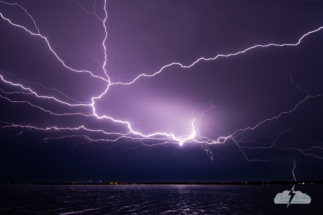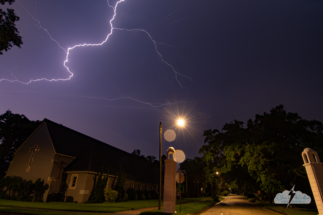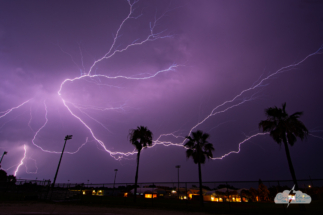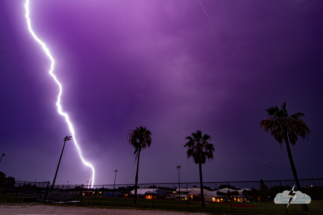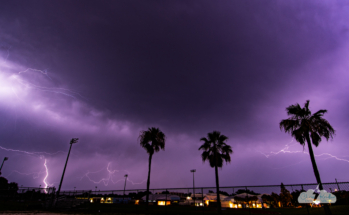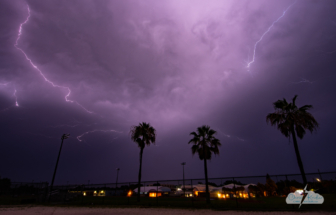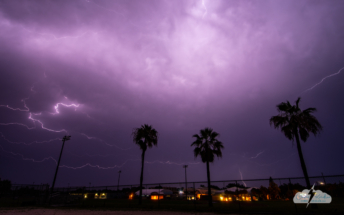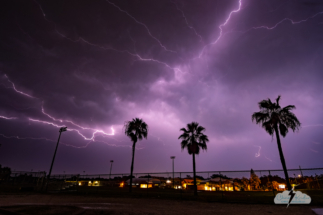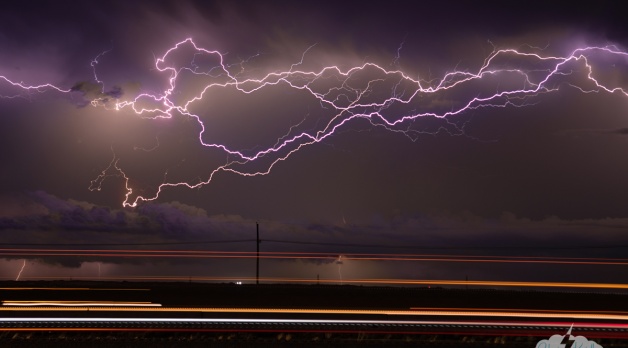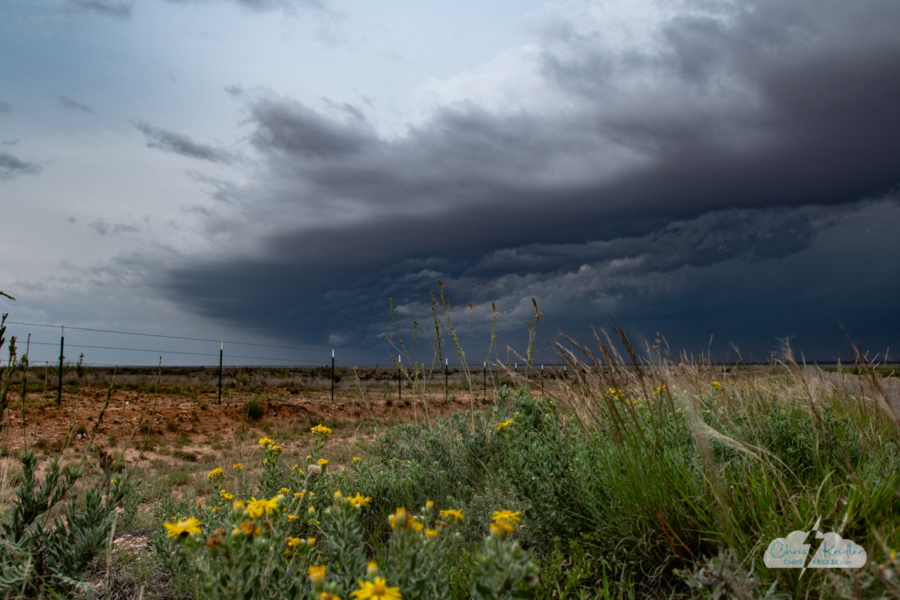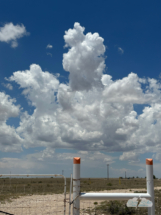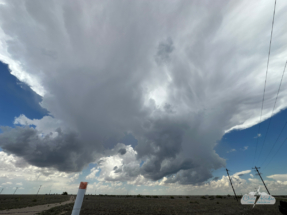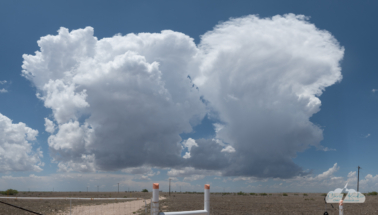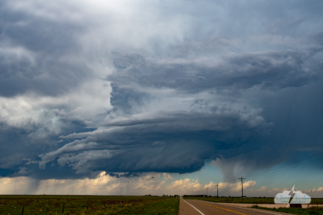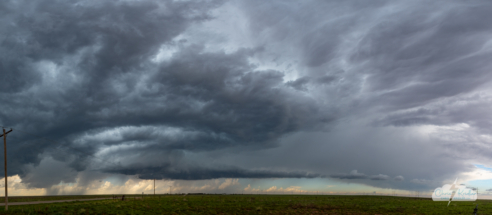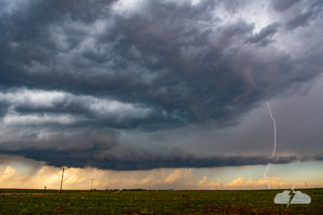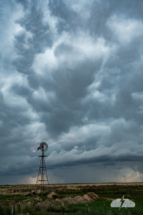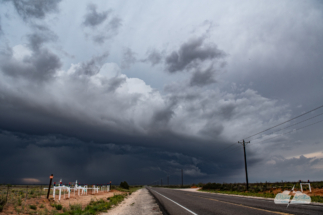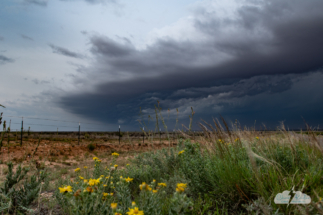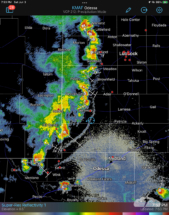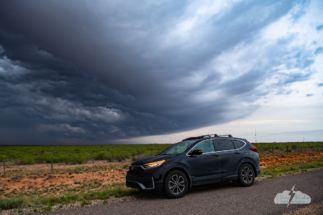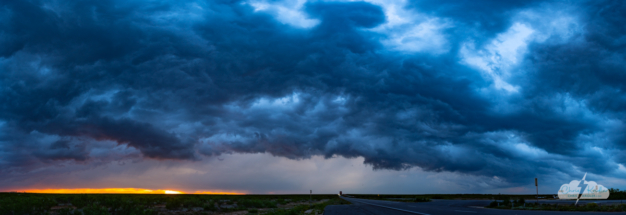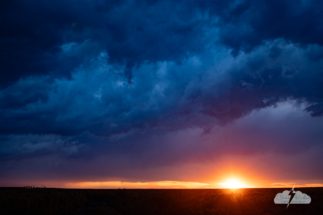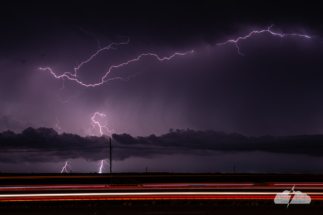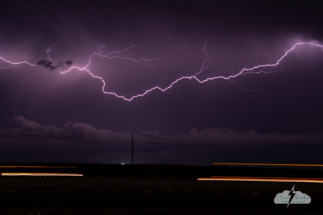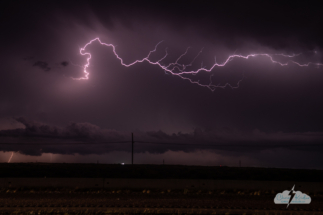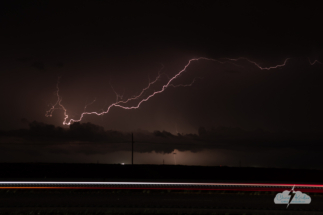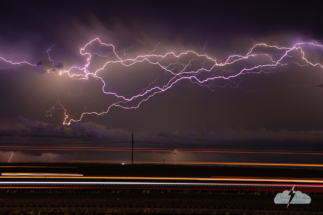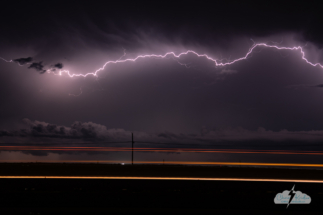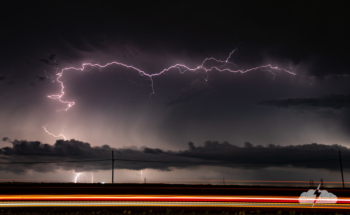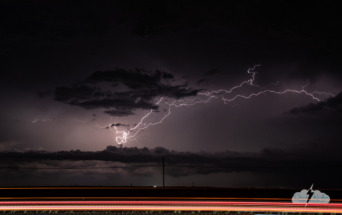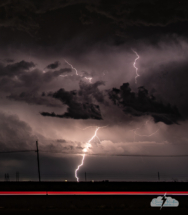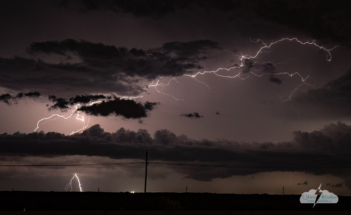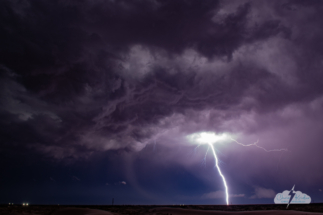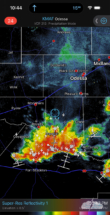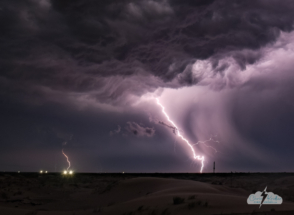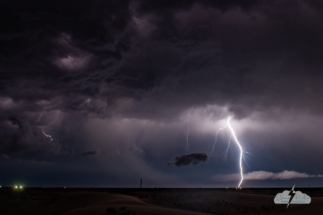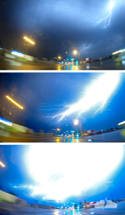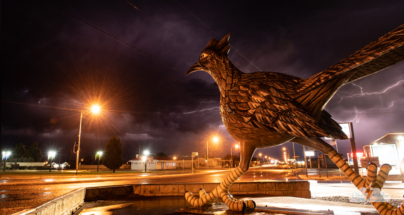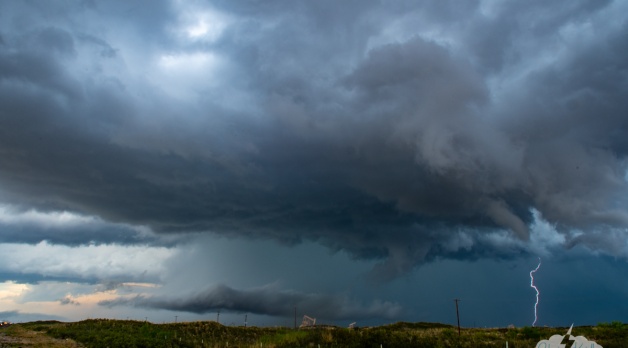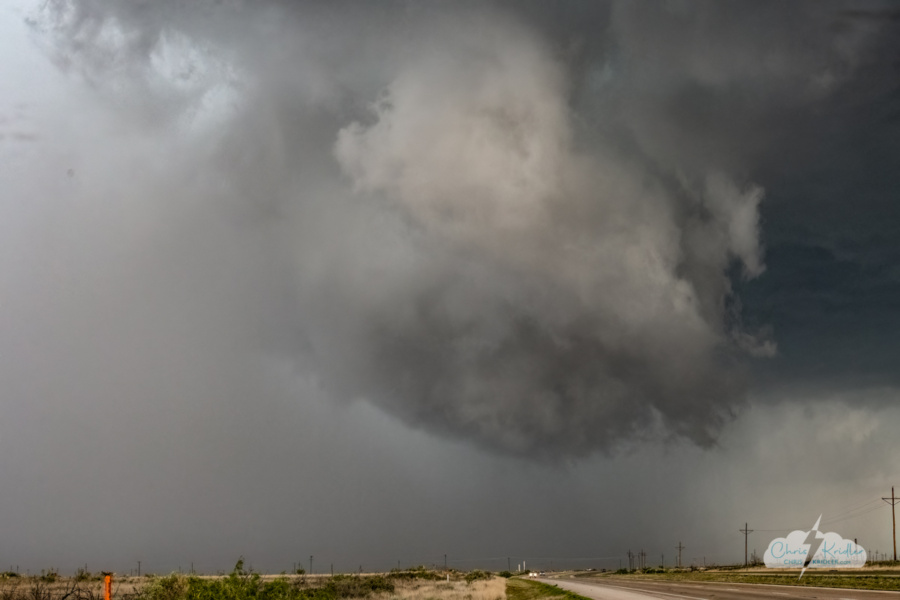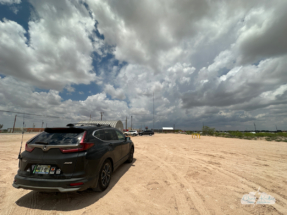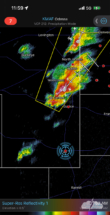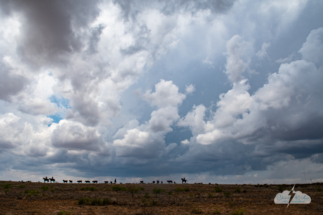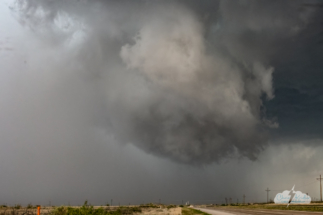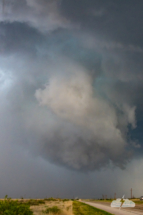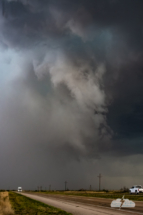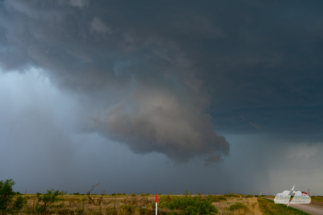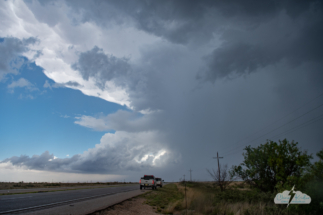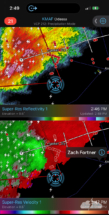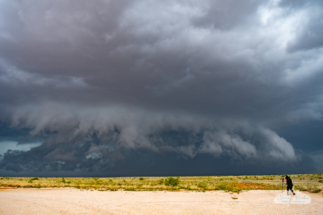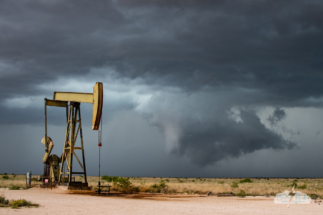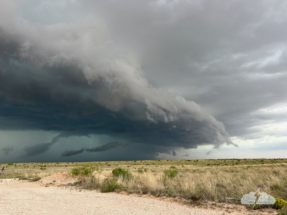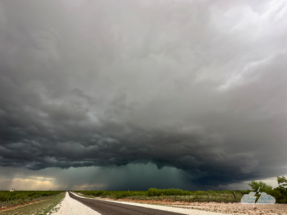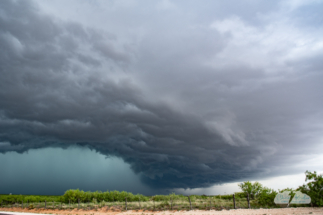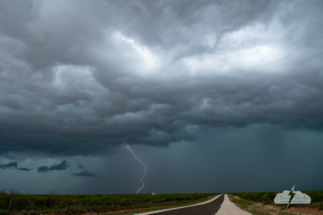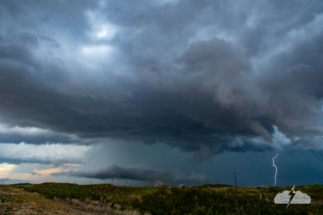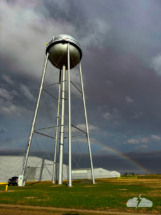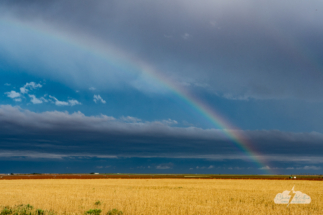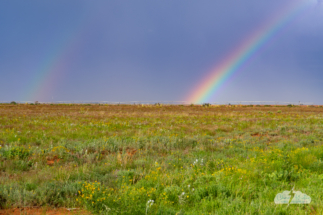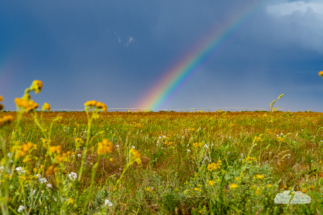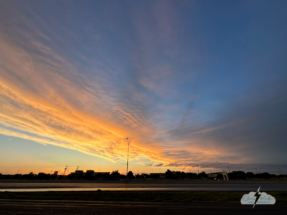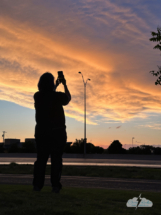When I saw a big line of storms approaching the east coast of Florida with lots of lightning on June 19, I figured I could get into position to photograph it. But Act I of the chase was disappointing. I parked at the St. Johns River west of Cocoa and photographed the line coming in. Just about all the lightning was in the clouds. I caught the shelf cloud, then as the rain hit, I scurried east and holed up at home with the scared dogs while it pounded over us.
But as the line was passing, I noticed a flash out our back door and thought, lightning crawlers? It was worth a try.
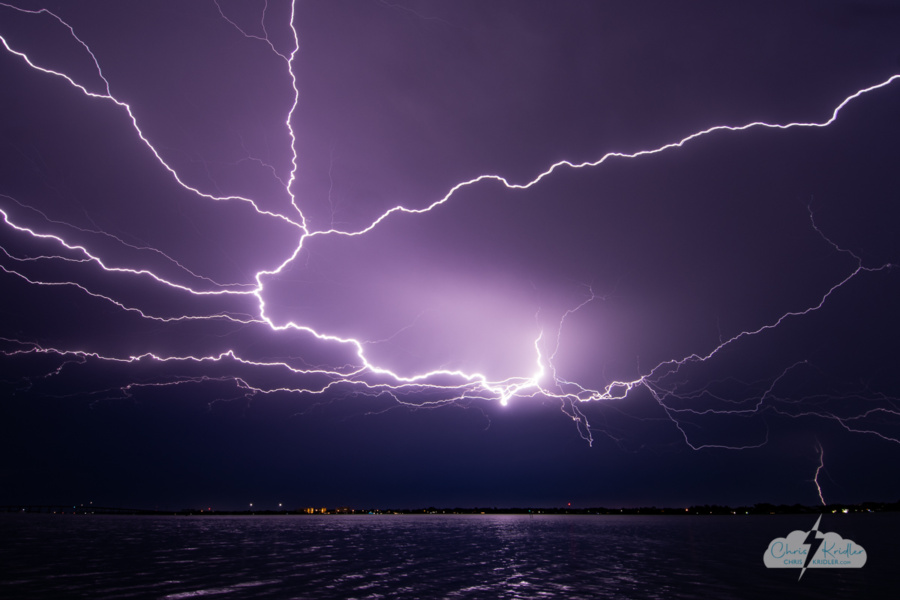
After the storms pushed mostly offshore, they left in their wake an incredible lightning crawler show. This was shot from Rockledge, looking over the Indian River Lagoon.
I missed one or two amazing crawlers, like fireworks across the sky, as I tried to get set up along the Indian River Lagoon in Rockledge. Just when I was about to give up hope, a dazzling lightning crawler exploded across the sky from horizon to horizon. A quick preview of the shot showed it might be overexposed – this was a seriously bright bolt for a crawler. Fortunately, with a slight exposure adjustment in editing, it looked fantastic!
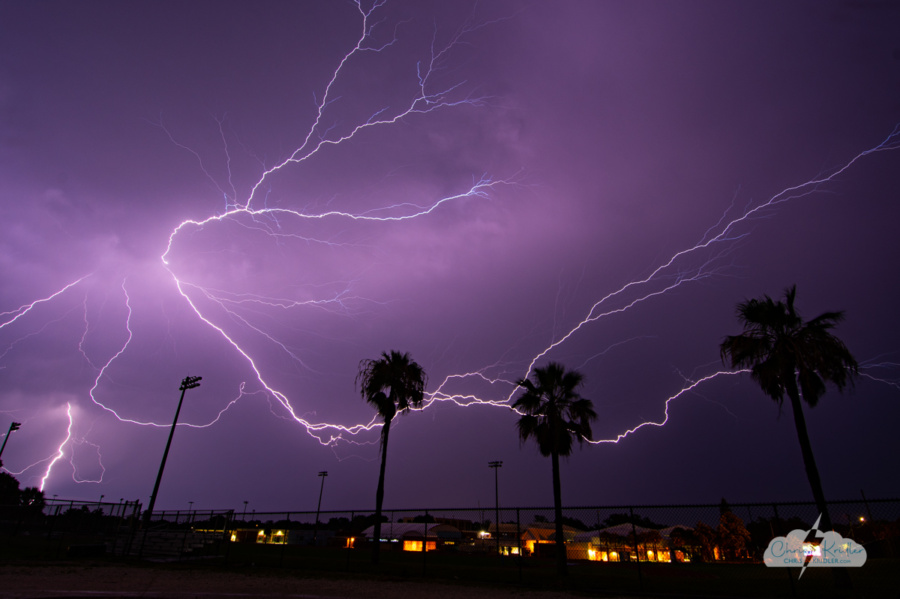
Lightning the night of June 19, 2023, shot by Rockledge High School.
I got a few more crawlers, none quite as spectacular. I moved to near Rockledge High School as more rain moved in. Now I shot from within my car to stay sort of dry (the camera still got wet; I had to wipe the lens frequently) and to stay safer. And in spite of the rain, I caught several more lovely lightning crawlers. Just before midnight, I headed home. This was the best lightning I’d seen on the Space Coast in a long time.
When do you see crawlers? In my experience, it’s usually late in the storm cycle, as severe storms have lost some of their power but are still electrified. Patience is essential, as great crawlers can occur several minutes apart. Crawlers can be intracloud (within one storm) or intercloud (between storm clouds). Some folks call it sheet lightning, spider lightning, streak lightning or heat lightning, a colloquial term also used for diffuse flashes caused by a storm that’s too far away to be seen.
Roll over an image to see a caption, or click on any photo to start a slide show.

